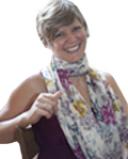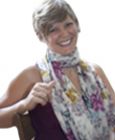
Relationships
Seeing You in My Mirror
How we see our selves is intimately connected to how we see others.
Posted January 2, 2014

One day last week, between wrapping and opening presents, chopping vegetables, and rushing kiddos here and there, I saw myself in the mirror. “So what,” you might be thinking. Most of us look in a mirror at least a few of times a day. But this time, I looked in the mirror and something amazing happened.
I was brushing my teeth, thinking over the day I had ahead of me, checking my Facebook, remembering something I’d forgotten at the grocery, noticing I was very ready for my coffee, and suddenly, as I turned to spit, I caught my eye in the mirror. And that’s when it happened – I saw myself. All at once, my Facebook and my errands and my coffee just fell away, and there I was.
See, I can’t know exactly what it’s like for you, but usually when I look in the mirror, my Self is not what I see there. Sometimes I see skin that is old – skin patterned with tiny, weird bumps or criss-crossing wrinkles. Sometimes I see eyes that are tired – bordered on top by heavy lids and on bottom by dark shadows. Sometimes I take a step back and I see a body that bulges and sags in all the wrong places. And I rarely take more than a moment to fix what’s fixable or shrug off what’s not before turning away from the mirror and going about my day. And maybe the next time I notice my reflection, I’m delighted to find that my eyes have woken up a bit or that these jeans make my belly look flat. Or maybe I’m still seeing old or tired or fat and saggy.
But last week, what I saw in the mirror was more than any one body part or my evaluation of that part as good enough or not. I saw something in my eyes, and hesitated there a little, like there was something I recognized but couldn’t quite place. Then I turned to face myself. I breathed in and out, as I peered into my eyes, and took a couple of slow steps back so I could see most of my body in the mirror. I watched my chest expand and contract with each breath in the mirror, as I felt my chest expand and contract with each breath. I watched my hand touch my face and I felt my fingertips there.
And as I put together what I saw from the outside with what I felt from the inside, I was suddenly aware of other times in my life that I’d seen myself. As a child, entranced by my reflection in dance class. As an adolescent, suddenly realizing this changing body belonged to me. Seeing myself in the mirror while giving birth to my first child. Taking one final look in the mirror before I walked down the aisle to meet my partner. A random yoga class. Speaking in front of a workshop audience. A few still moments after my first acupuncture session. And slowly, those eyes I’d looked through and into in each of those moments filled with tears. And the only thought in my mind was suddenly, “Oh yeah… That’s who I am.”
And then, as suddenly as it had begun, the moment passed. I spit and rinsed out my mouth and scratched at a zit on my forehead and went about my day. I had vegetables to chop and a toaster oven to set up and errands to run and coffee to make. I didn’t see my reflection again that day. I found myself seeing something far more amazing. I saw others. I took a little more time when waking my children to touch their foreheads and tell them I loved them. I looked into my husband’s eyes when he thanked me for the coffee. I wished Susan, who rang up my bananas at the grocery, a “Happy New Year,” and I felt myself appreciating her kind face and hoping in earnest that her New Year was lovely. I laughed with a stranger in the parking lot when we both were caught in the rain without umbrellas.
Recently, psychologists studying Relational Frame Theory (RFT) have come to explore the connection between how we approach ourselves and how we approach others. RFT suggests that the concept of the self and the concept of the other are learned interdependently and remain connected throughout our lives. Whether we intend to or not, we define ourselves in terms of others – the groups we belong to, our roles in those groups, our relationships with specific people, how we are like them, and how we are different. Because of this connection between the conceptual self and the conceptual other, we can’t help but behave toward ourselves in ways that are similar to how we behave toward others.
What if it took seeing myself, toothpaste and wrinkles and bulges and all, for me to really see my kids, or my husband, or Susan, or the wet, forgetful stranger last week? What if I only really saw them by opening up to seeing myself in their eyes? What if you cannot truly empathize with another person until you learn to open up to the most difficult of your own experiences? What if you cannot hold another in judgment without exacting the same judgment for yourself? What if you can’t dehumanize another person or group of people without sacrificing a bit of your own humanity? In short – what if loving yourself is the only way to truly love others, and loving others is the only way to truly love yourself?
I’m not much for New Year’s Resolutions, but this year, the world has turned in such a way as to lay one at my doorstep. And I invite you to join me. As we step out into our brand new year, let us take a few moments each day to regard ourselves – to really see ourselves as more than the body, or the roles, or the relationships we inhabit. And, in doing so, open our eyes to seeing the beautiful humans that fill our lives.
Emily Sandoz is author of Living With Your Body and Other Things You Hate: How to Let Go of Your Struggle with Body Image Using Acceptance and Commitment Therapy.



